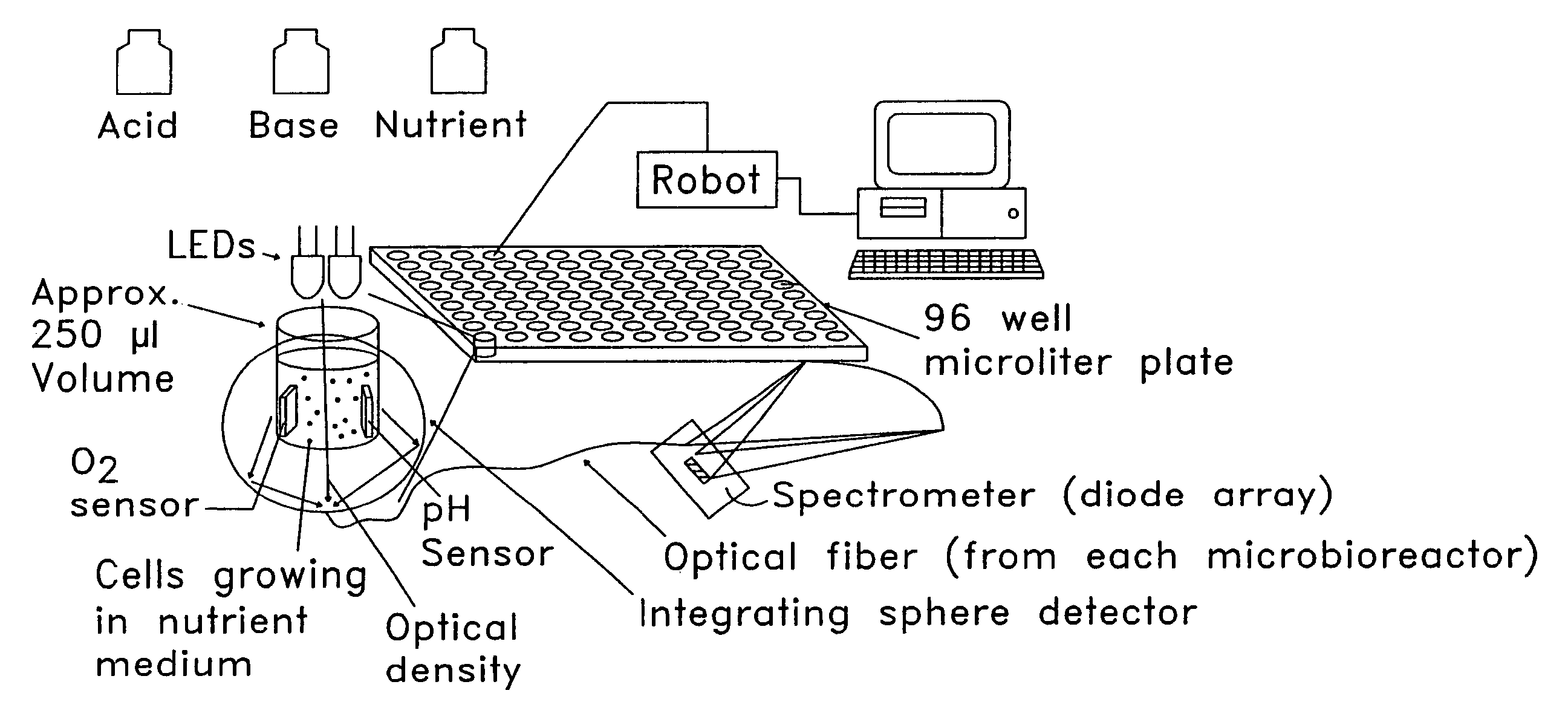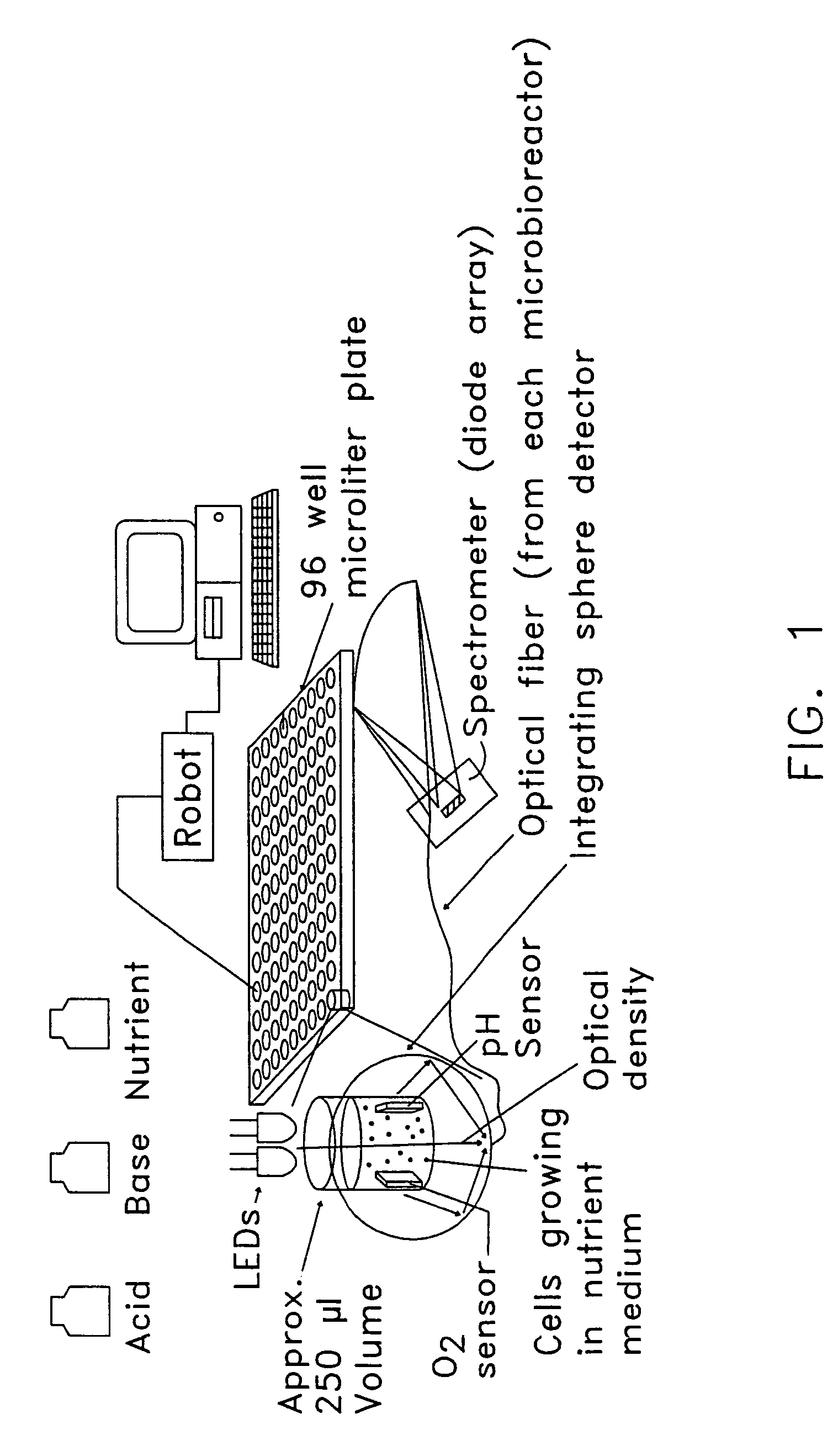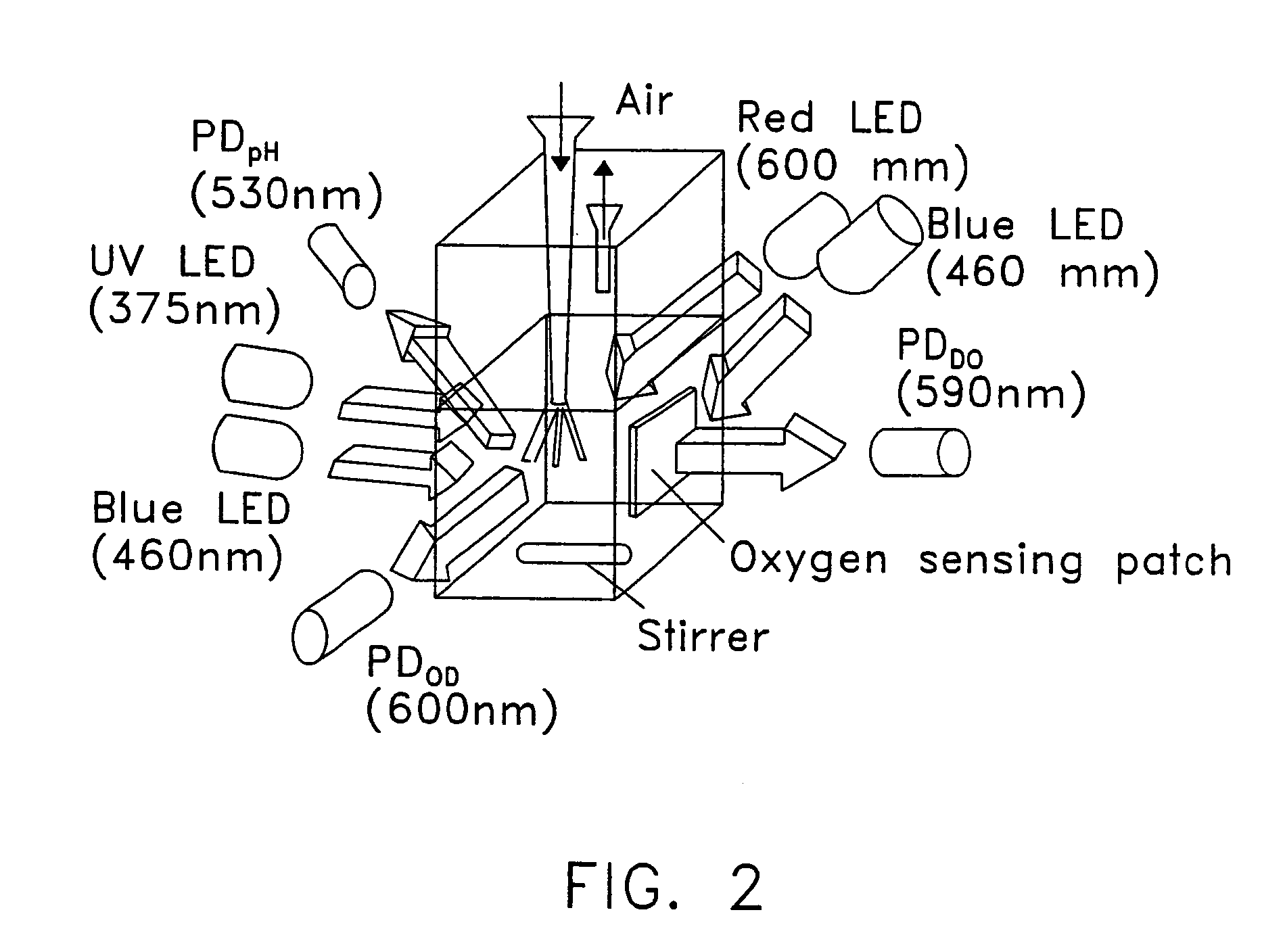Bioreactor and bioprocessing technique
a bioreactor and bioprocessing technology, applied in the field of bioreactors, can solve the problems of discarding the batch of drugs, wasting resources, and wasting resources, and achieving the effect of reducing the number of batch drugs
- Summary
- Abstract
- Description
- Claims
- Application Information
AI Technical Summary
Benefits of technology
Problems solved by technology
Method used
Image
Examples
example 1
[0116]In this example, the working volume was scaled down to about 2 ml by using a disposable cuvette as the bioreactor. The design of the microbioreactor is presented in FIG. 2. Three parameters, pH, DO and OD, were continuously measured using optical chemical sensors. A test fermentation was performed in the microbioreactor and the results were compared with the results from a fermentation in a standard 1 liter bioreactor.
[0117]The working bioreactor was a disposable polystyrene cuvette, 1×1 cm, with a total volume of 4 ml. To avoid contamination during cultivation, it was equipped with a silicone rubber cap. The cap had an inlet for air delivery and outlet for exhaust air. The inlet and outlet were positioned at the corners of the cuvette to avoid overlapping with the optical path for OD measurements. The inlet was connected to an air sparger, as indicated in FIG. 2, which was fabricated from a 100 μl plastic pipette tip. Three tubes with inner diameters of 0.25 mm were positione...
PUM
 Login to View More
Login to View More Abstract
Description
Claims
Application Information
 Login to View More
Login to View More - R&D
- Intellectual Property
- Life Sciences
- Materials
- Tech Scout
- Unparalleled Data Quality
- Higher Quality Content
- 60% Fewer Hallucinations
Browse by: Latest US Patents, China's latest patents, Technical Efficacy Thesaurus, Application Domain, Technology Topic, Popular Technical Reports.
© 2025 PatSnap. All rights reserved.Legal|Privacy policy|Modern Slavery Act Transparency Statement|Sitemap|About US| Contact US: help@patsnap.com



